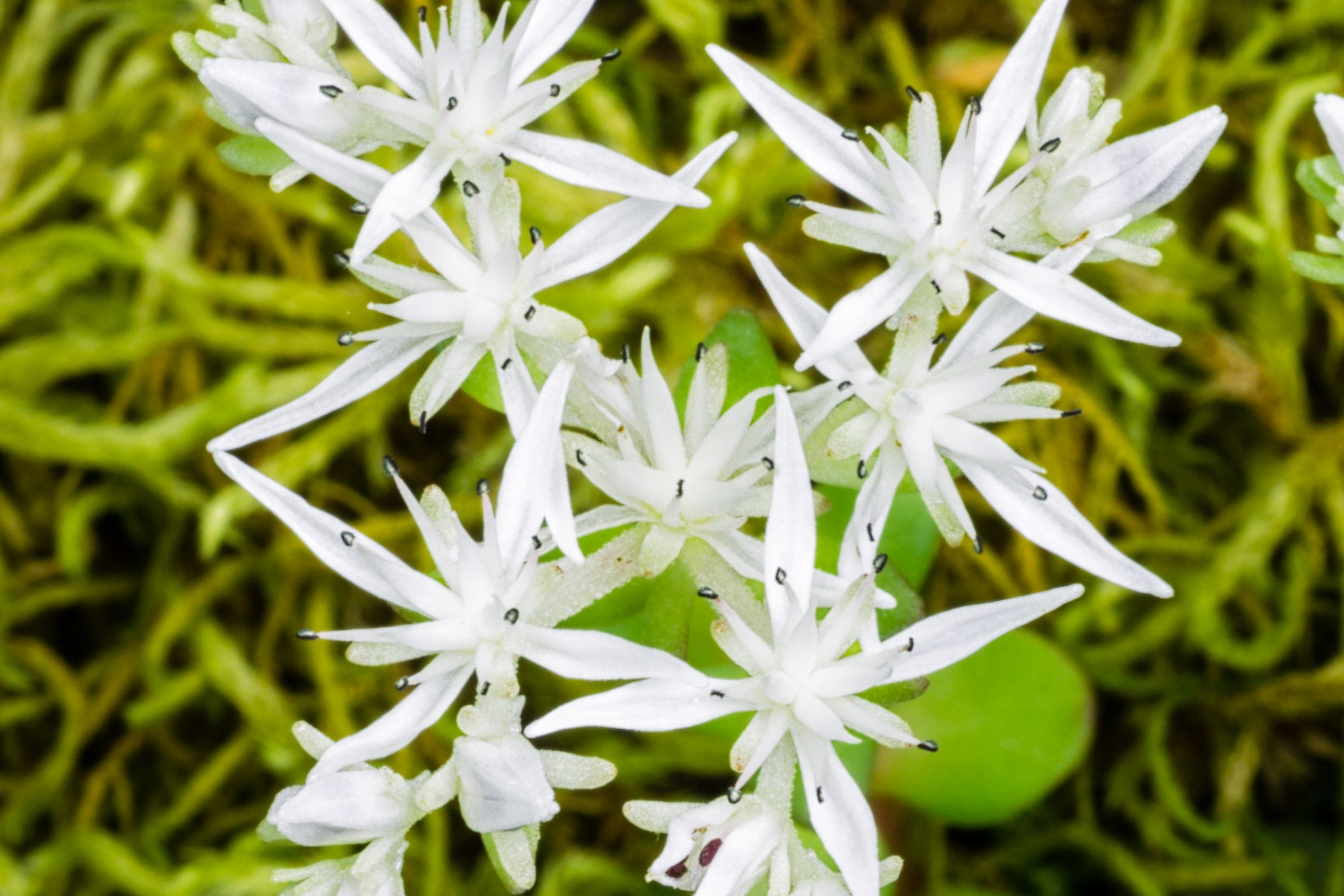Three-leaved stonecrop
(Sedum ternatum)

Description
Sedum ternatum is the most widespread native Sedum species in eastern North America, commonly known as woodland stonecrop. It has white flowers, blooming April to May. This shade-tolerant species is often found in the forest understory, although it can also grow in sunnier locations when sufficient moisture is present. Its common name of "stonecrop" evokes its ability to thrive atop boulders, where its succulent leaves help it to retain moisture in shallow soil. It adapts well to garden use. Sedum ternatum is native to much of the eastern United States, as far west as Arkansas and Iowa, south down the Appalachian Mountains, and north to near the Canada–United States border. Sedum ternatum can be distinguished from other sedums, native and cultivated, which are commonly found in the United States by the white flowers with four (not five) petals, and by the leaves in whorls of three, whence the species name. The plant flowers for about a month in late spring to early summer. Sedum is a large genus of flowering plants in the family Crassulaceae, members of which are commonly known as stonecrops. The genus has been described as containing up to 600 species, subsequently reduced to 400–500. They are leaf succulents found primarily in the Northern Hemisphere, but extending into the southern hemisphere in Africa and South America. The plants vary from annual and creeping herbs to shrubs. The plants have water-storing leaves. The flowers usually have five petals, seldom four or six. There are typically twice as many stamens as petals. Various species formerly classified as Sedum are now in the segregate genera Hylotelephium and Rhodiola. Sedum was first formally described by Carl Linnaeus in 1753, with 15 species. Of the genera encompassed by the Crassulaceae family, Sedum is the most species rich, the most morphologically diverse and most complex taxonomically. Historically it was placed in the subfamily Sedoideae, of which it was the type genus. Of the three modern subfamilies of the Crassulaceae, based on molecular phylogenetics Sedum is placed in the subfamily Sempervivoideae. Although the genus has been greatly reduced, from about 600 to 420–470 species, by forming up to 32 segregate genera, it still constitutes a third of the family and is polyphyletic.
Taxonomic tree:







